There are very few things more stressful to a hunter than trying to find a deer you’ve taken a shot at.
In an ideal world, your deer would either drop on the spot or leave a big ol’ blood trail, but unfortunately things don’t always pan out how we hope.
In this article, we will show you how to track a deer with no blood trail.
So keep reading:
How To Track A Deer With No Blood Trail:
Step 1: Don’t Rush!

One of the worst things you can do, especially when there is no definitive blood trail, is to go rushing in and bumping any potential deer.
It is sometimes hard enough to track a deer when there is a blood trail.
But if you have a wounded deer scared and running further into the woods, it will make your recovery efforts significantly more difficult.
What to do instead?
Take your time and keep a cool head. It is likely to take a little analysis to steer you in the right direction.
Pro tips:
Use this time to have a small snack, layer up or de-layer depending on the weather conditions, get your equipment in order, and set a waypoint in your phone/GPS.
Step 2: Consider Your Placement

Via hunter-ed.com
One of the things that will determine how far away your deer maybe is where on their body the bullet or arrow hit.
In the heat of the moment, it can sometimes be hard to notice where they were hit.
Vital hit
A quick, dramatic movement by the deer, such as a hard jolt or dip is more likely to mean the shot went through the vitals.
This would hopefully mean the deer is pretty close, potentially under 100 yards from the initial site of impact.
Stomach hit
If a deer is hit in the stomach, the deer may escape the initial site but very soon after lay down somewhere nearby to slowly pass.
Flesh wounds cause a great amount of unknown.
Why is the pre-search so important?
In these early pre-searching stages, knowing where you are likely to have hit the deer is helpful as it will help you determine your tracking approach.
If some extra help may be needed in the search efforts, and how much time and resources you may need to allow to look for the deer.
Alright, you’ve waited some time, and are ready to look for your deer. Now what?
Step 3: Inspect the Place of Impact
The first place you need to go is where the deer was when you first made the shot.
This area can give you a good amount of information that may help you with your tracking pursuits.
What to look for?
Take a look for any blood, and at the color and consistency of the blood that may be found.
There may be an initial splash from the impact of the shot.
Even more:
In the heat of the moment with the deer likely to bound away sharply, there may be tracks and signs of a direction the deer headed off in.
Pro tips:
As mentioned before, place a waypoint at this impact location. It is a vital point of reference when tracking.
Step 4: Assess How the Blood Looks
The color and consistency of the blood can tell you a lot about the potential state of the deer.
Here we will look at some of the different blood characteristics and how long you should wait before looking for the deer.
What colors to look for?
Rich red color
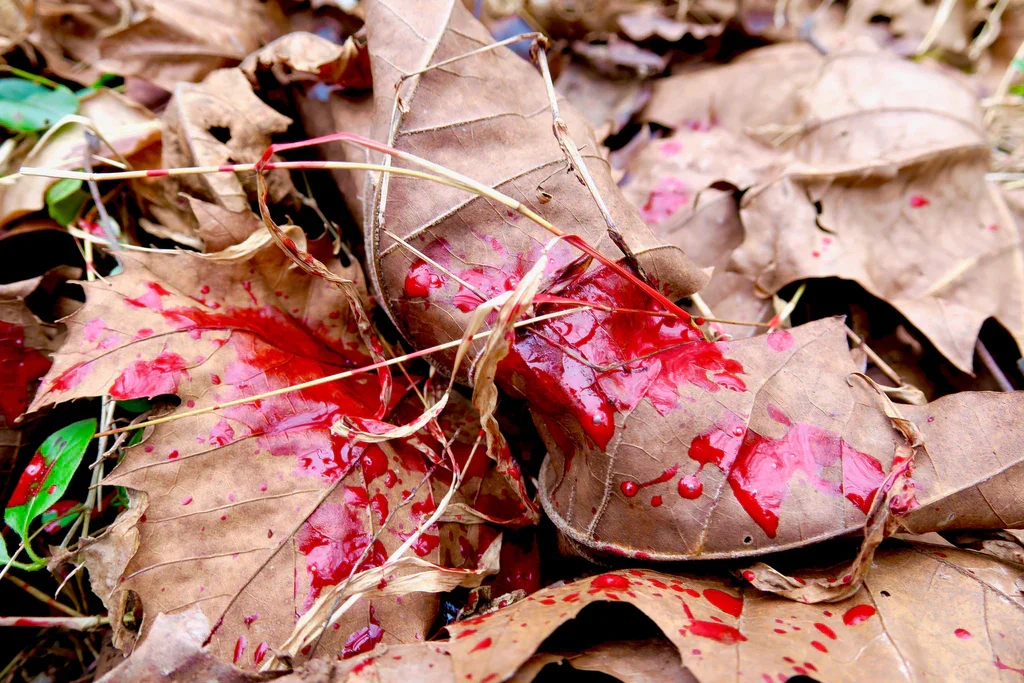
Via exodusoutdoorgear.com
It could represent a heart shot. If so, the deer is likely to be downed nearby.
Waiting period: You should be safe to proceed cautiously without extra waiting time.
Bright pink color
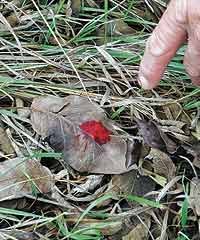
Via bowhunter.com
Sometimes with bubbles in it, this often represents a shot through the lungs.
The deer is likely to be down, less than 100 yards from the impact site.
Waiting period:
You should wait at least 30 more minutes before tracking.
Dark red/blackish color
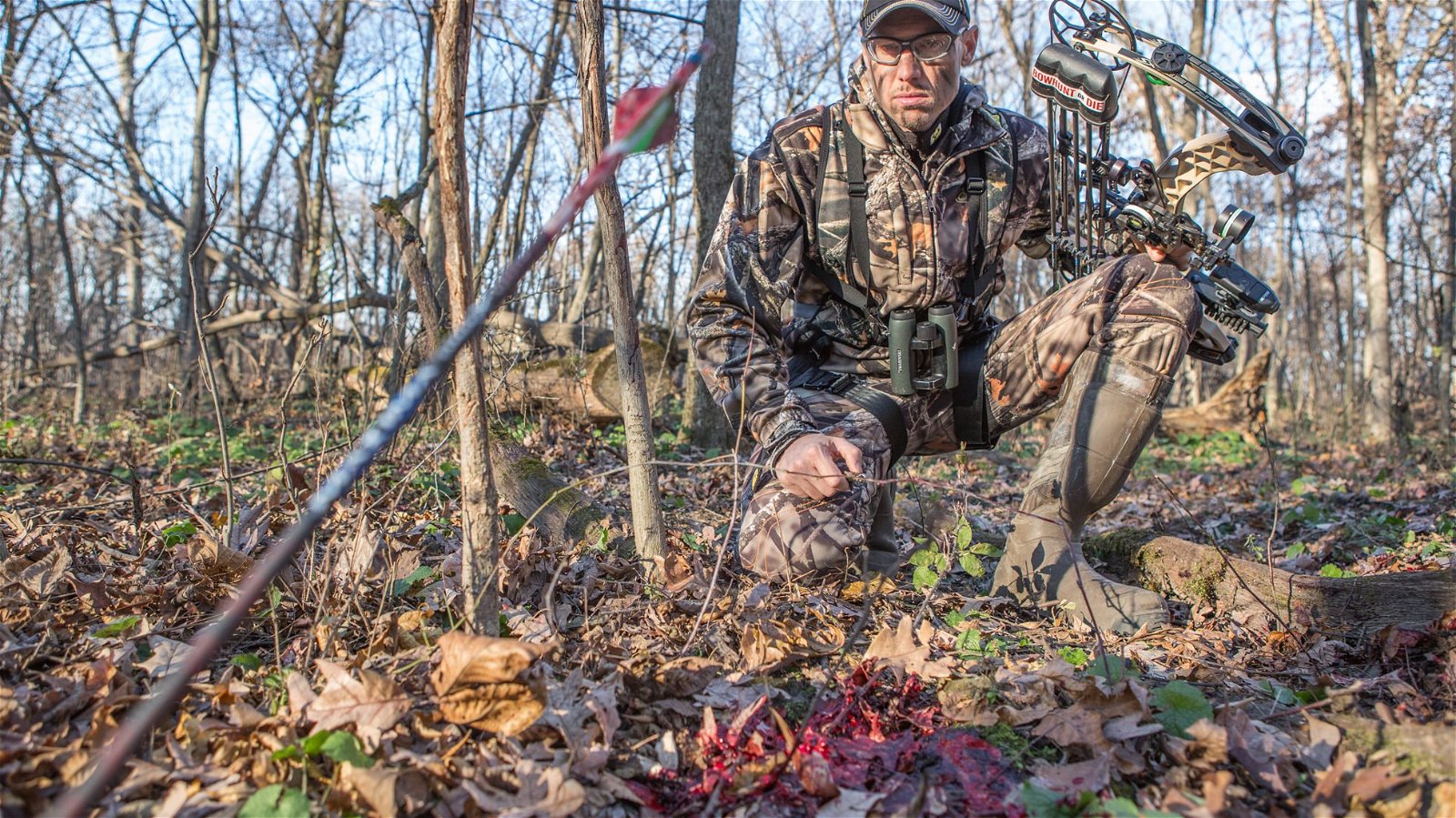
Via bowhunting.com
This usually means a liver or kidney shot. The deer may run for a considerable distance but is likely to drop eventually.
Waiting period:
You should let approximately 4 hours pass before tracking.
Yellowish color
Likely means a shot to the stomach. The distance, timing and likelihood of retrieving this deer is unknown.
Sometimes it may run. Sometimes, it may lay down nearby to slowly pass.
Waiting period:
Due to the risks of this one, it is recommended to wait about 8 hours.
Standard blood color
Sometimes there is a muscle shot, or some that brushes across the skin. This can be the color of normal blood, and sometimes have tufts of hair in it.
This does not always just mean a flesh wound, and could still possibly be a vital shot.
Waiting period:
This is variable, however it is probably recommended to wait at least 1 hour in case it was a good vital shot.
What should you do in the meantime?
- Beyond waiting time, move cautiously and assess the trail as you go.
- Keep an eye out for the deer, in case it is still alive and bounding away.
- It may be a vital hit, or it may be a non-fatal flesh wound.
- Continue to assess until you are completely certain of the outcome.
Step 5: Follow the Trail
It is best to take your time to successfully follow a trail with little blood.
Sometimes it is hard to see small drops of blood when standing up.
So when you cannot see anything, it can be worthwhile getting closer to the ground, inspecting from different angles, and closer to try to see smaller signs.
The Semi-Circle Sweep

Via nyantler-outdoors.com
Firstly, follow the clearest path. If there is an existing game trail, there is a good chance the deer followed that.
If you do not see any sign, you should go back to your last blood trail marker and do a semi-circle sweep.
Here’s how:
a. To do this, start 10 yards from your last point, and search a 180-degree arch.
b. Looking for blood signs or other tips that may let you know if the deer changed direction.
c. If you see nothing, span out to 20 yards, and do this 180-degree semi-circle search.
d. Continue this sweeping process until you come across some sign.
Pro tips:
- Using your phone or GPS to put in waypoints of the blood trail is also worth carrying bright surveyors' tape.
- Tying the tape to branches or grass along the way will help you keep your bearings when you need to backtrack or re-establish where you are.
Look in the Brush
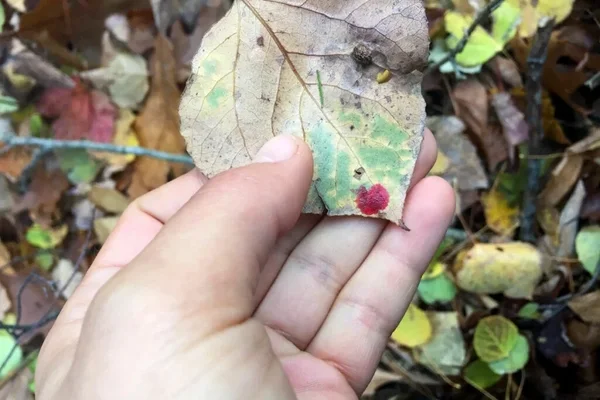
Via Outdoorlife.com
Sometimes wounded deer want to find somewhere hidden and quiet to bed down.
Keep an eye out under trees and brushy areas to see if the deer have gone to bed down somewhere.
They usually won’t venture too deep, just to get somewhere cozy but accessible, with a potential escape route.
Step 6: If You Still Can’t Find It… Call for Backup.
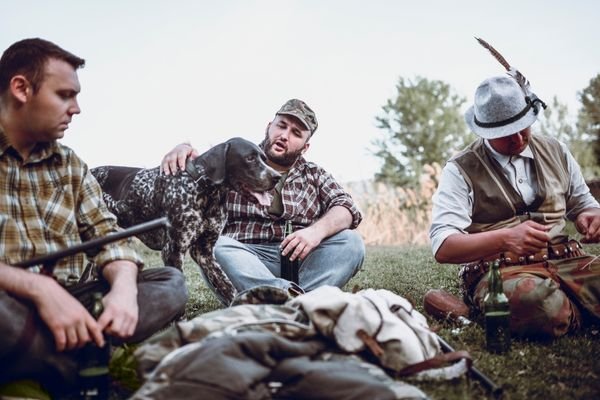
If possible, you should bring in some extra pairs of eyes to help in the search.
On occasion, it can take hours and a lot of walking to find a downed deer when the trail doesn’t lead you directly there.
With more people, you can cover more ground more effectively, notice signs or hints towards where the deer may have gone, or hopefully, even the deer itself.
Pro tips:
If you or a friend happens to have a trained hunting dog, they can also be effective in helping to sniff out the trail and lead you in the right direction.
Listen!
As hunters, it is important not to leave downed deer in the field, and also to ensure that we have not left wounded deer in the woods.
Once a deer has been shot, all possible efforts should be made to either find the deer or determine with minimal doubt whether the shot was non-fatal and the deer has taken off for good.
Sidebar: Why the Blood Trail May Stop?

There can be different reasons why there is or isn’t a lot of blood; or for how long the blood trail runs before slowing down or stopping completely.
It is usually based on where the deer they are shot.
Although not always consistent, here are a few examples of when the blood trail may run dry:
Muscle wounds:
May bleed for a couple of hundred yards, but as the un-fatal deer continues to run, the wound coagulates, and the bleeding stops.
Gut shot:
Although often resulting in a dead deer (with time), these hits can have minimal blood trail due to the wound becoming blocked up with a tissue.
In this case, most bleeding will be internal.
Liver shot:
Similar in theory to the gut shot mentioned above.
Hitting high:
A shot that sails high and clips the top of the back does not often result in much blood.
This area is above the heart and does not require a lot of blood supply.
An incomplete passthrough:
More often happens when bow hunting, when your projectile doesn’t leave an exit wound.
This means less area for the bleeding to take place and usually results more so in internal bleeding.
Regardless of whether there is much blood or not, it is important to continue your search for the deer, as it is not uncommon to find a downed deer beyond where the blood trail ceases.
Final Words:
Trying to track down a deer is a stressful task.
Whether it’s the anticipation of coming upon a deer or wondering if you’d made a decent shot.
Keeping a cool head, taking your time, and putting in the extra effort to try to notice the small hard-to-see signs will give you a better chance of continuing along the trail to find your deer.
Not every shot is the same, not every deer is the same, and not all terrain is the same.
Employing these tactics will give you a better chance of a successful harvest when the (lack of) sign may be against you.
Do you like this topic: “How To Track A Deer With No Blood Trail?”. Rate us below.
